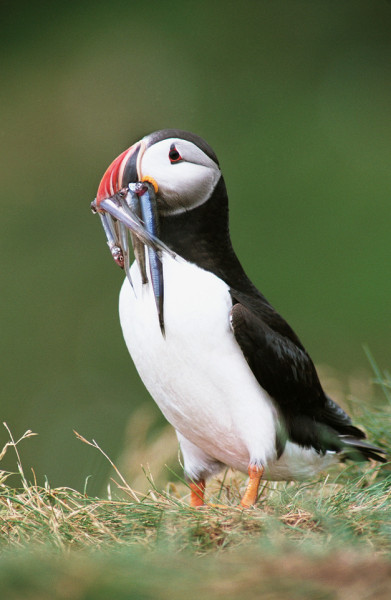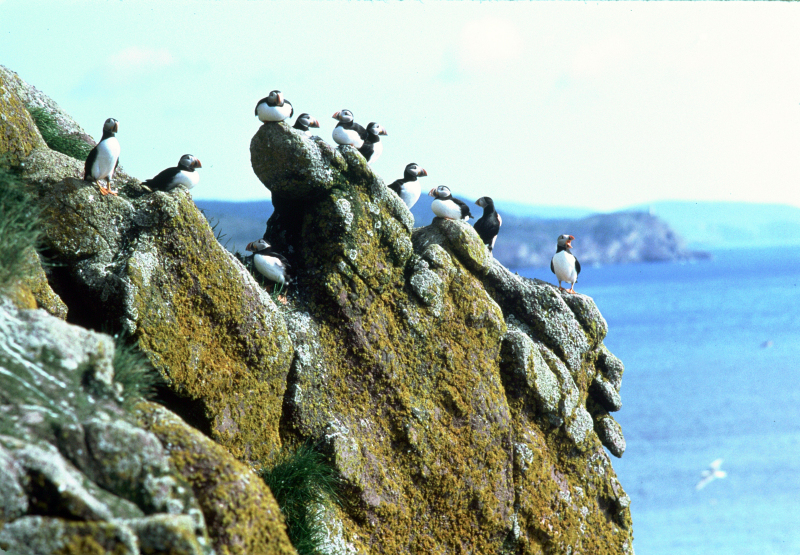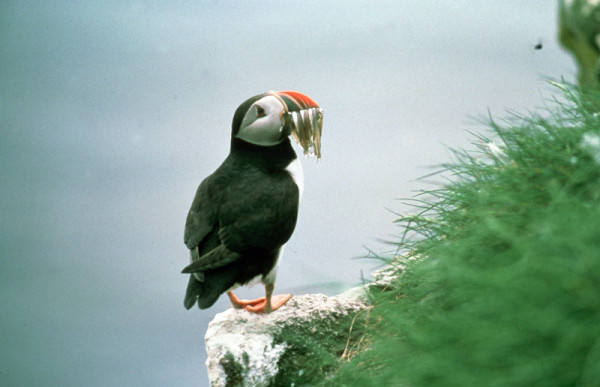Meet our Species of the Month: the Atlantic puffin!
Written By Joanna Barrington, Manager, Strategic Partnerships
This blog series on Canadian wildlife explores key facts, threats and what WWF is doing to conserve these species. These Canadian species are also featured in the TELUS 2014 calendar. Check out the digital calendar and you can follow along with fun activities, download beautiful desktop wallpapers, colouring pages and more.
The Atlantic puffin, Fratercula arctica, is the smallest species of puffin, weighing in at approximately 500 grams and at a height of 25 to 30 centimeters. They have penguin-like coloring in terms of its black head, back and wings, and a white underside. Its beak is gray during the winter but blooms with a colourful orange, blue and yellow hue during breeding season in the spring. Puffins often mate for life, locating one another as they tend to nest in the exact same burrow year after year.
Although they spend most of their time out at sea, during nesting season puffins can be found on land from the Maine-New Brunswick border to southeastern Labrador.Puffins are excellent swimmers. They use their wings to stroke through water and steer with their webbed feet. The puffin is less skilled at flying and must flap its wings 300 to 400 beats per minute to stay in the air.
Did you know?
The puffin can dive as deep as 60 meters underwater and can hold its breath for up to one minute. They can catch an average of ten fish per trip but some have been known to catch as many as 60 fish in one dive!
Why is the Atlantic puffin at risk?
The puffin population in North America suffered greatly in the early 1900s due to habitat destruction and hunting of puffins for their eggs, feathers and meat but have since recovered and are currently growing. The puffin is threatened by over-fishing, oil spills and human disturbance such as tourism during breeding as they require solitude for this process.
What is WWF doing?
To protect the puffin’s habitat, WWF is leading the transition to smart ocean management and sustainable ocean economies. To keep our oceans healthy, WWF is working to correct the damage that’s already been done and to put better controls in place for the future of our oceans. WWF is working with governments and other organizations to improve ocean management and working with businesses to make fisheries and aquaculture more sustainable.
WWF-Canada and TELUS are partnering to support the conservation of Canadian wildlife and their habitats through a new $1 million, four-year partnership. Visit www.givewherewelive.ca to learn more.




